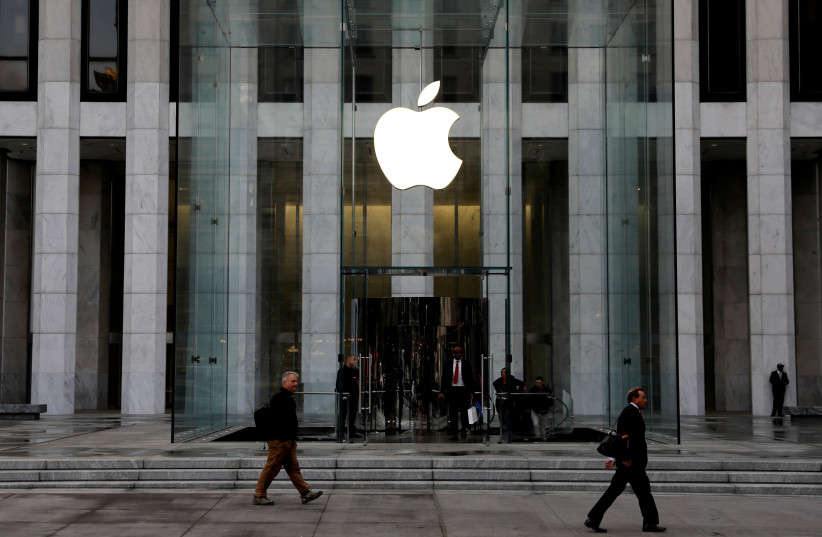Apple’s new Vision Pro is a virtual reality device. So, it seems fitting that I give it a virtual review.
By that, I mean a review based only on what I’ve read, since I wasn’t at the Cupertino launch earlier this month and haven’t actually tried the device. But the descriptions of its revolutionary functionality have convinced me that we are looking at the future of computing.
Vision Pro is the name of Apple’s just-announced mixed-reality goggles. You strap them on your face and then you can interact with the world and with Apple-sanctioned apps and entertainment content. You glimpse what’s in the goggles in 3D, and you can easily toggle to a “pass-through” mode where you can see the real world right in front of you.
Apple is positioning the Vision Pro as a productivity device more than as a new piece of hardware on which to play games, as with the branding for the Quest virtual reality headset from Facebook parent Meta. To wit: In one example from the demo, users could interact with their Mac’s screen in a 3D virtual space.
Now, that’s something I desperately want.

I have long been stymied by the fact that the main program I use for writing, an app called Scrivener, requires a large screen since it supports multiple windows and functions. That need for super size has, in turn, impeded my ability to take my 12- inch laptop to a local coffee shop.
A huge Mac screen in a virtual space might be just what I need.
Apple says its goggles won’t be available for at least another year. That might provide an opportunity for an Israeli start-up called Sightful, which has started taking preorders for its own laptop-goggles combo.
It’s hard to imagine Sightful besting the Silicon Valley behemoth, though, especially since Sightful requires its own dedicated computer and operating system, rather than working with the technology and interfaces you’re already comfortable with.
Sighful’s main advantage is that its goggles have a much smaller form factor than its competitors from Apple and Meta. That illuminates a direction I believe all such devices are heading toward: First, release progressively lighter, smaller and more comfortable glasses. Then, offer the same service... with no goggles at all.
Screenless computers: Sci-fi made reality
What most pundits have gotten wrong about the Vision Pro is that it’s not about virtual reality at all. Apple never mentioned VR or the metaverse in its presentation. The Vision Pro, rather, represents the dawn of screenless computing.
We’ve seen plenty of computers with pop-up, nonphysical displays in sci-fi, from Minority Report to the Orville. Apple has now put together the initial building blocks.
The Vision Pro has 12 cameras facing both out and in. That means that it can track your eyes with uncanny accuracy. So, to select an icon or a file to open, you simply look at it, then “pinch” by bringing your thumb and forefinger together. You may “air type” or bring a physical keyboard.
In the (not-so-distant) future, if Elon Musk has his way, our interface to the world of “spatial computing” could be via a chip implanted in our brains.
As cool as replacing a physical monitor with goggles might be, there’s another use for the Vision Pro that goes beyond productivity, and it’s a true killer app (although some might find it cringe-worthy). You can take 3D videos of your family, friends and children.
Like many proud parents these days, I have thousands of hours of footage of my kids. The videos look fine, but they’re flat. Making them 3D (even if I must don goggles to view them) would bring these memories irresistibly to life. It reminds me of the TV miniseries Wild Palms, from 1990.
In Wild Palms, 3D programming is beamed directly into people’s homes; a sitcom or a murder mystery takes place right in front of your living room couch. I’ve been waiting for this kind of spatial computing and holographic entertainment since Wild Palms first aired.
THE VISION PRO is not there yet. At $3,500, it’s a long way from a mass market consumer product. And it won’t even be released until 2024. But let’s not forget that the first version of the iPhone had no GPS, no front-facing selfie camera, not even an app store!
Tech journalist David Pogue notes that, “In five years, [the Vision Pro] won’t cost $3,500. It will have become a standard big-ticket birthday/holiday option for your kid, spouse, or parent, just the way Apple Watches or AirPods are now.”
Apple will undoubtedly pursue its standard new product playbook. “Start with a 1.0 version that’s equally praised and damned for its differentness. Then keep fixing, fixing, fixing over the years, chipping away at the specs, features and cost,” until the product is a hit, Pogue writes.
Let’s not forget how the naysayers went after the iPad – “who needs something that’s bigger than an iPhone but less functionality than a laptop? There’s no market,” the pundits cried – before directing their ill-fated ire on the Apple Watch. Apple now makes the world’s most popular smartwatch.
Just as Apple has endlessly iterated over the last 15 years since the iPhone was introduced to produce a polished, must-have device, the Vision Pro might not fulfill all my fantasies in version 1.0, but what we saw in June 2023 is not necessarily what will be delivered in 2024, let alone 2025 or 2026.
The Vision Pro, writes tech analyst Tim Bajarin, “is fundamentally a Mac in headset form. The fact that most existing Mac apps will work on this headset means that at launch, there will be thousands of programs.”
Give it a few years. The coffee shop is beckoning.
The writer’s book, Totaled: The Billion-Dollar Crash of the Startup that Took on Big Auto, Big Oil and the World, is available on Amazon and other online booksellers. brianblum.com
